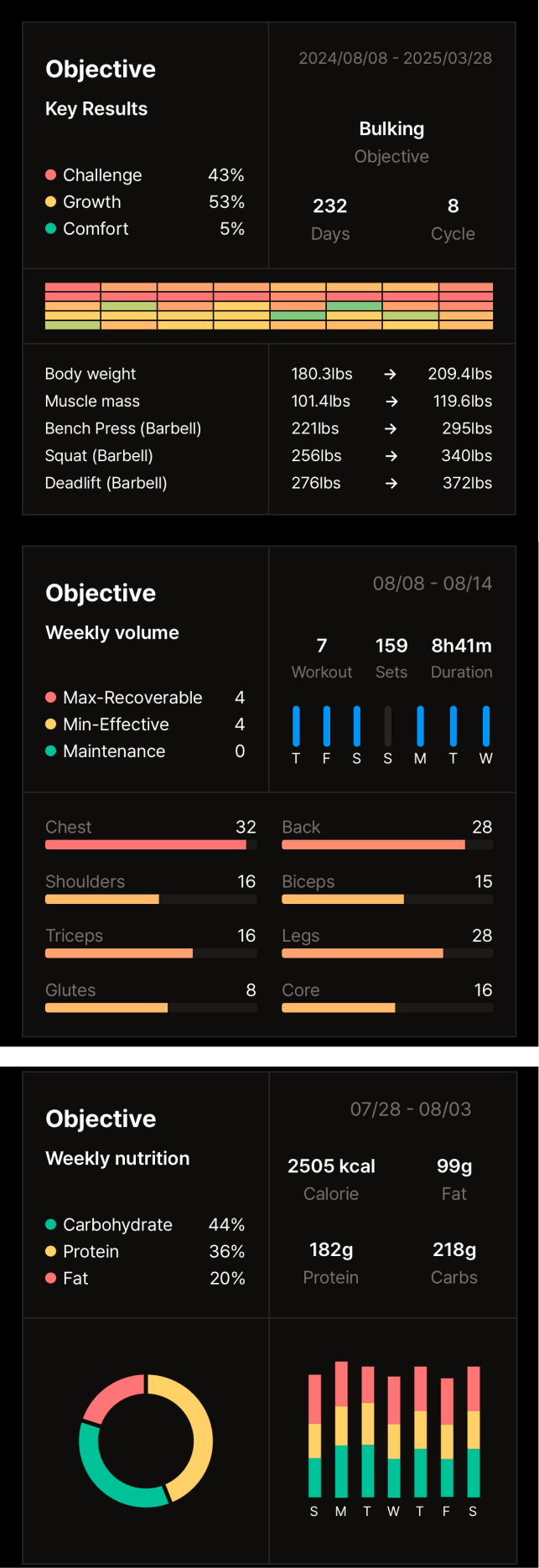Vegetarian, Vegan & Keto Meal Plans
Introduction
Have you noticed how many people are embracing specialized diets these days? From athletes to everyday fitness enthusiasts, personalized nutrition is trending. This growing interest reflects a broader shift towards health-conscious living. Among these dietary approaches, vegetarian, vegan, and keto meal plans stand out for their popularity and potential benefits. This guide will explore these three distinct approaches, offering practical tips and meal ideas for beginner to intermediate fitness enthusiasts looking to optimize their dietary choices. Get ready to discover a world of delicious, health-focused meal planning!
Main Sections
Understanding Vegetarian, Vegan, and Keto Diets
What Sets These Diets Apart?
A vegetarian diet excludes meat, poultry, and fish. Some vegetarians, known as lacto-ovo vegetarians, include dairy products and eggs. Veganism, a stricter form of vegetarianism, eliminates all animal products, including honey and gelatin. The ketogenic (keto) diet, on the other hand, focuses on high fat, moderate protein, and very low carbohydrate intake. This combination shifts the body's primary fuel source from glucose to ketones, a metabolic state known as ketosis.
| Diet | Meat/Poultry/Fish | Dairy/Eggs | Primary Focus | |---------------|-------------------|------------|-------------------| | Vegetarian | Excluded | May be included | Plant-based foods | | Vegan | Excluded | Excluded | Plant-based foods | | Keto | May be included | May be included | High fat, low carb |
![[Comparison chart visually representing the differences between vegetarian, vegan, and keto diets]](https://storage.googleapis.com/objective-web/blog-images/vegetarian-vegan-keto-meal-plans-1740135754601.webp)
The Benefits of Each Diet
Each diet offers unique health benefits. Vegetarian and vegan diets are linked to lower risks of heart disease, type 2 diabetes, and certain cancers. Research suggests they can also contribute to healthy weight management. The keto diet can promote rapid weight loss, improve blood sugar control, and potentially enhance cognitive function. For example, a study in the Nutrients journal found that plant-based diets are associated with reduced LDL cholesterol. Another study in the New England Journal of Medicine showed significant weight loss in individuals following a ketogenic diet.
Crafting Vegetarian Meal Plans
Essential Components of a Vegetarian Diet
A well-rounded vegetarian diet emphasizes a variety of fruits, vegetables, whole grains, legumes, nuts, and seeds. Pay close attention to protein, iron, and vitamin B12 intake, which can be obtained through foods like lentils, beans, tofu, fortified cereals, and dairy products (for lacto-ovo vegetarians).
Sample Vegetarian Meal Plan:
- Breakfast: Oatmeal with berries and nuts
- Lunch: Quinoa salad with chickpeas and vegetables
- Dinner: Lentil soup with whole-grain bread
- Snacks: Fruits, yogurt, trail mix
Delicious Vegetarian Meal Ideas
- Veggie Stir-Fry: Combine your favorite vegetables with tofu or tempeh and a flavorful sauce.
- Quinoa Salad: Toss cooked quinoa with chopped vegetables, herbs, and a lemon vinaigrette.
- Lentil Soup: A hearty and nutritious soup packed with lentils, vegetables, and spices.
Exploring Vegan Meal Plans
Building a Balanced Vegan Diet
Vegan diets require careful planning to ensure adequate intake of essential nutrients typically found in animal products. Replace animal protein with plant-based sources like tofu, tempeh, lentils, beans, and seitan. Focus on calcium-rich foods like leafy greens, fortified plant milks, and tofu. Omega-3 fatty acids can be obtained from flaxseeds, chia seeds, and walnuts.
Sample Vegan Meal Plan:
- Breakfast: Green smoothie with spinach, banana, and plant-based protein powder
- Lunch: Buddha bowl with roasted vegetables, quinoa, and tahini dressing
- Dinner: Chickpea curry with brown rice
- Snacks: Fruits, nuts, vegan yogurt
Tasty Vegan Recipes
- Chickpea Curry: A flavorful and satisfying curry made with chickpeas, coconut milk, and spices.
- Tofu Scramble: Crumble tofu and sauté with vegetables for a delicious breakfast scramble.
- Avocado Toast: Whole-grain toast topped with mashed avocado, spices, and optional toppings.
![[Image showcasing a variety of vibrant vegan dishes]](https://storage.googleapis.com/objective-web/blog-images/vegetarian-vegan-keto-meal-plans-1740135758366.webp)
Navigating the Keto Diet
The Basics of a Keto Diet
The keto diet drastically restricts carbohydrate intake, typically to 20-50 grams per day. This forces the body to enter ketosis, using fat as its primary fuel source. Focus on healthy fats like avocado, coconut oil, olive oil, nuts, and seeds. Moderate protein intake from sources like meat, fish, poultry, eggs, and cheese is also essential.
Sample Keto Meal Plan:
- Breakfast: Scrambled eggs with bacon and avocado
- Lunch: Salad with grilled chicken or fish and a high-fat dressing
- Dinner: Steak with roasted vegetables and cauliflower mash
- Snacks: Cheese, nuts, hard-boiled eggs
Keto Meal Ideas for Beginners
- Cauliflower Rice: A low-carb alternative to rice made by grating cauliflower.
- Bacon-Wrapped Asparagus: A simple and flavorful side dish.
- Keto-Friendly Desserts: Use almond flour and sugar substitutes to create delicious treats.
![[Image showcasing a variety of keto-friendly meals]](https://storage.googleapis.com/objective-web/blog-images/vegetarian-vegan-keto-meal-plans-1740135759620.webp)
Combining Vegan and Keto Diets
Challenges and Solutions
Combining vegan and keto diets presents unique challenges. Finding plant-based sources of healthy fats while staying within strict carbohydrate limits requires careful meal planning. Focus on avocados, coconut oil, nuts, seeds, and low-carb vegetables like leafy greens, cauliflower, and broccoli.
Sample Vegan Keto Meal Plan:
- Breakfast: Chia seed pudding with coconut milk and berries (low-carb)
- Lunch: Salad with avocado, tofu, and a high-fat vegan dressing
- Dinner: Cauliflower rice stir-fry with tempeh and coconut aminos
- Snacks: Avocado slices with everything bagel seasoning, macadamia nuts
Conclusion
Vegetarian, vegan, and keto diets offer distinct paths towards achieving health and fitness goals. Whether you prioritize plant-based eating, rapid weight loss, or improved metabolic health, each approach provides unique benefits. Experimenting with different meal plans can help you discover what works best for your individual needs and preferences.

